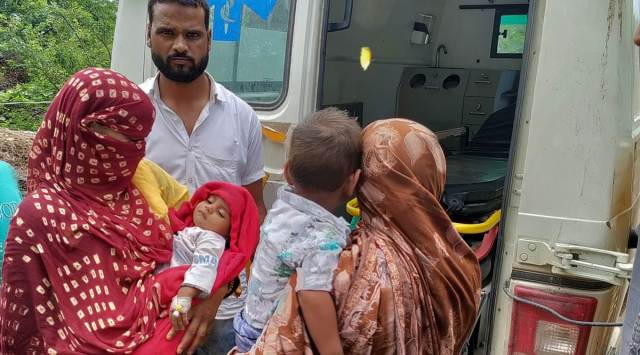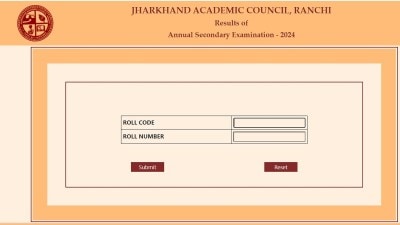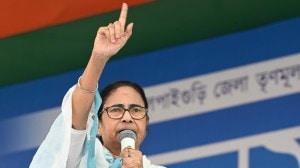- India
- International
Panic in Haryana village as 7 kids die in 3 weeks, health officials probe
Such is the panic in Chilli village, over 20 km from Palwal, that health officials are camping in a panchayat house to investigate the cause of death
 No link to dengue yet, say officials. (Express Photo by Pavneet Singh Chadha)
No link to dengue yet, say officials. (Express Photo by Pavneet Singh Chadha)In the time of Covid and public health emergency, health officials in Palwal district of Haryana are scrambling to diagnose the reason for the death of at least seven children, all aged below 14, within three weeks in a village.
Such is the panic in Chilli village, over 20 km from Palwal, that health officials are camping in a panchayat house to investigate the cause of death – it is still unclear and the reasons being cited, by residents of the village and health officials, range from dengue to pneumonia, gastroenteritis to vector-borne diseases owing to lack of sanitation.
While residents claim the deaths are the result of a dengue outbreak, authorities say their team, comprising an epidemiologist, a science officer and health inspectors, is “studying the pattern”, but is yet to find a link. Authorities say there is a possibility that the deaths could be because of multiple illnesses arising due to poor sanitation in the village. Officials say they have counted seven deaths over the last 20 days during their door-to-door survey. The village residents and the sarpanch say at least nine children have died.
Palwal Chief Medical Officer Dr Brahmdeep Sandhu said: “We are not ruling out dengue, but at the moment, we have not received any dengue positive report from the samples we have taken from the village. Among the deaths that occurred, two were from suspected pneumonia, one was a case of severe anaemia, one was due to fever from gastroenteritis, one an acute fever and another was due to fever with shock. In yesterday’s case of death, there was no illness associated with it.”
On Tuesday, another death was reported in the village — a month-old girl died around 3 am, said her father Jaffrudin (22), a tractor driver. “I woke up in the middle of the night to go to the washroom and noticed that she was lying motionless. She did not have fever. I do not know what is happening here. There is fear and panic,” he said.

And at 12.15 pm, two toddlers with high fever were taken to the Palwal district hospital — an ambulance has been parked there. Two officials from the World Health Organisation’s regional centre also arrived to provide technical assistance to health officials as a “proactive” measure.
Public health officials are conducting a survey among the 2,947 people in 275 households in the village and are testing for malaria, dengue, Covid and other vector-borne diseases, said health department officials.
The Indian Express spoke to family members of six children who died within days of contracting high fever. Barring one, all families reported similar symptoms — high fever, rash, vomiting, low platelet count — and a run across several hospitals, both government and private. They said the children died within 3-4 days of reporting a fever.
Salmuddin (40), a labourer, said his 7-year-old son Saqib contracted high fever on August 27. “He complained of fever and some chest pain. We took him to the local doctor who gave a medicine. But when the fever did not recede, we went to a private hospital in Hathin, which suggested a test for dengue. His platelet count had dipped to 30,000 which the doctor said was serious,” Salmuddin said.
“He was then admitted to the government hospital in Nalhar, Nuh on the night of August 31. The next morning, he died. He was running around a week before he had the fever. Now he is gone,” he said.
Sanjeeda has not slept for the last six days. Her three children, aged 6, 7 and 14, all contracted fever in the first week of September and had to be admitted to hospitals. Her youngest daughter, 6-year-old Sehenjum, died on September 8.
“She died within four days of getting the fever. On September 4, she had some symptoms — high fever, nausea, coughing — and we assumed it’s normal fever. We took her to the local doctor in our village. When the fever did not subside, we admitted her to a private hospital in Palwal. The hospital asked us to arrange platelets. Two days later, doctors said her condition had deteriorated and she could not be saved. She died while we were bringing her home. We had to borrow money for treatment of our children. The local private hospital is charging Rs 15,000 for a bed and dengue-related medicines,” she said.
Farjeena, whose 7-year-old son Farhan died on September 1, said: “He had high fever on August 29. We rushed him to a private lab in Punhana for testing. His platelet count was around 45,000. He was admitted to the government hospital in Nalhar the following day and died two days later.”
Several residents showed private lab reports of low platelet counts of their children.
“In all the cases, the platelet count of the children had gone down rapidly and then resulted in death. What fever causes death within days? Now, after so many have died, fogging and cleaning of drains are being done,” said Munsharif, a resident who said both his nephews had dengue.
“Everyone is fearing the worst. If my child is asleep for a long time, I check if he has fever,” said Jamshed, uncle of 6-month-old Aqsa who died on September 2, a day after she had high fever. “There are always cases of fever after the monsoon, but they are not fatal.”
Chilli village sarpanch Naresh Kumar said that as many as nine deaths have been reported in the village in the last 20 days. “Private labs, where most of the children were taken, told villagers that the cases are dengue-related and platelet count was low. The government hospital is saying the report is awaited. Some more children are admitted in private hospitals. The health department swung into action after some villagers reported the deaths to the sub-divisional magistrate last week, following which samples were taken and officials visited the village,” he said.
Officials said 25 teams were working to survey, diagnose and investigate the cause of deaths.
“Poor sanitation and a contaminated water supply could have caused the spread of vector-borne diseases. Some water pipes are coming out of drains, so there is contamination. There is no proper drainage, so wherever water collects, there is a possibility that mosquitoes will multiply during the monsoon,” Dr Rajiv Batish, district malaria officer, said, adding that they had also appealed to residents to get vaccinated and the infants immunised.
“We have done 250 rapid diagnostic tests for malaria and 194 slide tests, all of which have been negative. Sixty-four samples of RT-PCR tests for Covid have also turned out negative. For dengue, we had sent 12 samples, who we thought were high risk, but all are negative. I have written to the District Commissioner to get the village cleaned on priority and have also ordered for RT-PCR tests for Covid for the entire village,” Dr Sandhu said.
Apr 19: Latest News
- 01
- 02
- 03
- 04
- 05







































